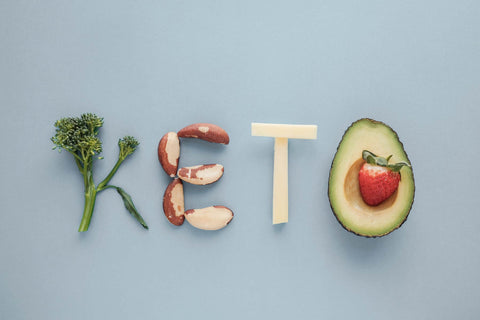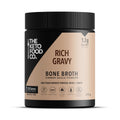The ketogenic diet is probably one of the most googled search terms that relate to dietary approaches, and if you do just a quick investigation you might find up to 10 different ways to do a ketogenic diet. In the literature, though, there are four diets that are differentiated by their macronutrient distribution, but all are designed to induce ketosis.
It is worth stating that the purpose of this dietary approach is to encourage the body to produce ketones through the burning of fatty acids. This is because everyone is different as to how low the dietary carbohydrate (and how high the dietary fat) needs to be to achieve this. Some need a strict 20g of carbohydrate or less per day, whereas other people may get into a state of ketogenesis while consuming 100g of carbohydrate a day. This difference can come from the activity level of the individual, their genetic ability to produce ketones, their metabolic state, and other factors that may make it easier (or not) to produce ketones.
The four diets that are referred to in the literature are the standard ketogenic diet, the modified atkins diet, the MCT diet and the low glycemic index diet. Below is a description of what each of these are and, for the purposes of what you want to achieve, the best approach for you.

Classic ketogenic diet
The classic ketogenic diet is over 100 years old and was originally developed in 1924 by Dr Russell Wilder at the Mayo Clinic as a nutritional therapy to mimick fasting, which has long been used to treat epilepsy. Fasting was used as a therapy after it was discovered that starvation increased the production of betahydroxybutyrate and acetone and this improved seizure control.. Dr Wilde discovered that a classical ketogenic diet could result in ketonemia the same way that 2-3 days of starvation would and be a more sustainable approach in the long term. The classic ketogenic diet provides a 4:1 ratio of fat (in grams) to carbohydrate and protein (ie 90% of calories coming from fat), though literature around the topic also describes the classic ketogenic diet as a ratio of 3:1. It’s main utility is in children with seizures and often the ratio is reduced after 3 months. The ketogenic diet was popular for a couple of decades before anti-seizure medication was developed at which point its use significantly reduced.
There are also adaptations of this version such as the Cyclical Ketogenic Diet (CKD) and Strategic Ketogenic Dieting (SKD) that include carb cycling for athletic performance on certain days or times which is often referred to as strategic carb re-feeding.
The modified Atkins diet
The modified Atkins diet is less restrictive than the classic ketogenic diet as it doesn’t limit calories, and allows for more carbohydrate and protein, yet is still able to elicit ketogenesis. It was originally designed by Dr Robert Atkins in 1972 and has since been modified to include more higher fibre, non starchy vegetable choices. In clinic, it restricts carbohydrates to 15-20g per day, but doesn’t restrict protein choices to the same extent, getting the majority of calories from eggs, meat, oils, cream, avocado and other fat sources. The diet is designed to provide a ratio of 1:1 fat to carbohydrate and protein, so it allows more choice, particularly for people who enjoy eating out.
This would be the ketogenic approach most people are familiar with, given the popularity of the Atkins diet for fat loss in the 1970s and again in the 1990s. While the carbohydrate is kept at the low in the clinical setting for epilepsy, where insulin is required to be kept low to minimize seizures, in the general population, someone may start at 50g total carbohydrate. One of the reasons focusing on total (rather than net) grams of carbohydrate is important is the impact that fibre can have on blood sugar response. Some of the popular low carbohydrate products use fibres such as isomaltoligosaccharide which, when eaten in large amounts, can push up blood sugar and kick someone out of ketosis. Importantly, the rise in blood sugar will lead to a subsequent crash and it can be difficult to regulate hunger, appetite and subsequent food intake in this situation.
Medium Chain Triglyceride (MCT) ketogenic diet
This diet, as the name suggests, includes more of its fat sources from medium chain triglycerides, or MCTs. MCTs are a type of saturated fatty acid with 6-12 carbon bonds. They can’t be stored in the adipose tissue and therefore are a readily available fuel source, and are more ketogenic than other fat sources (i.e. encourage the body to produce ketones). The MCT ketogenic diet doesn’t rely on ratios of macronutrients and instead provides a higher percentage of fat MCTs, with that can come with gastrointestinal side effects that may need to be managed (such as diarrhea, bloating, stomach cramps). Generally speaking, adding in even amounts of MCTs across the day along with meals can help alleviate symptoms, and everyone’s tolerance is different. Building up gradually can also help with taking on board more MCTs, so finding a starting point (perhaps 10g at each meal) and working up from there are good practice tips. From a clinical standpoint, its main efficacy has been tested in a population with epilepsy, however MCTs as a standalone treatment are now being trialled for helping improve overall cognitive function for conditions such as Alzheimer’s.
Low glycemic index treatment
This is a low carbohydrate, higher fat approach that has been shown to be effective at treating people with epilepsy that are unable to tolerate a high fat diet. The glycemic index is a measure used to indicate the impact that carbohydrate will have on the blood sugar response. The lower the glycemic index, the less of an impact that food has on blood sugar. Carbohydrates that have a rating of 50 or less (out of 100) are able to be included in the diet in the presence of other foods that also slow down digestion (such as fat or fibre). Carbohydrate calories are limited to 10% of overall dietary energy, so they are still very low. It was designed in 2002 and the first published research was in 2005. Since then, it has been found to be effective in conjunction with anti-seizure medication for reducing seizure frequencies in children.
These form the basis of the ketogenic diet approach that is clinically researched and utilized in a clinical setting. For you though, unless you are coming into the ketogenic diet for nutritional therapy, then your introduction to a ketogenic diet is unlikely to require as clinical an approach. That said, there are some recommendations to help make it a smoother introduction.
The basic how to for a ketogenic diet looks like this:
MACROS – big picture and your macronutrient breakdown
- No more than 50g of total carbohydrate each day ( around 25g-30g of net carbs. NZ measures in net carbs).
- Protein intake of 1.6g- 2g per kilogram body weight
- Fat to make up the remaining calories. This will equate to 60-70% of your calories
- See the food lists of foods that are on the ‘green’ list and choose predominantly from them
- Remove all obvious carbohydrate, such as bread, cereal, crackers, biscuits, pasta, rice, cous cous, legumes, most fruit, potato, kumara/sweet potato, parsnip. The carbohydrate you eat will ideally come from non-starchy vegetables, salad vegetables, a small amount of berries or other low carbohydrate fruit.
- Try to avoid too many ‘keto’ products and focus on getting minimally processed foods for your initial transition in. It is individual, however as stated above, some ‘keto’ products aren’t that ketogenic at all. The more you can control this, the easier your transition will be.
MICROS – your electrolytes, water and other small details
- Sodium requirements: ½ tsp salt in warm water in the morning (take it like a shot) and again at midday. The reason for this can be found here (and it is SO important too)
- Ensure you have adequate hydration throughout the day. Water is your best choice for a cold drink (sparkling or still) and you need more water than you think!
- Adding in ketogenic foods to help support your transition to ketogenesis and a ketogenic diet. These include raw apple cider vinegar, coffee, coconut products, MCT oil. For more on this, check out the blog post here
- Aim for three meals a day, rather than including snacks. Snacking is often necessary on a higher carbohydrate approach when energy, mood and hunger is going up and down due to blood sugar fluctuation. You may be in the habit of snacking, but you shouldn’t need to snack on a well-formulated ketogenic diet.
- Avoid having a too-short eating window (i.e. eating all of your calories within 4-6 hours) as you begin the ketogenic diet. The first priority is to stabilize blood sugar, reduce insulin and help your body produce ketones. Time restricted eating (TRE) can help you do that, however if you are transitioning from a diet that is high carbohydrate and/or you have an extended eating window, then it can be more challenging. For the first couple of weeks you might find it easier to have an eating window of 11-12 hours
- While spirits (with no-sugar mixers) and red wine (with no residual sugar) tend to be keto-friendly in low-moderate amounts, in the initial stages of your ketogenic diet it can be helpful to be alcohol free. Read more about alcohol here.
- If you are used to doing high intensity activity, focusing more on low intensity training/resistance training in the first 2-4 weeks can help encourage your body to burn ketones. When your intensity is above 70%, we get an increase in hepatic glucose output to fuel the training. This will suppress ketone production in the early stages of your ketogenic diet.
Coffee, tea, unsweetened cocoa are all fine to consume on a ketogenic.






Comments (1)
Love the look of your produce,can’t wait to see them in the South Island !!!